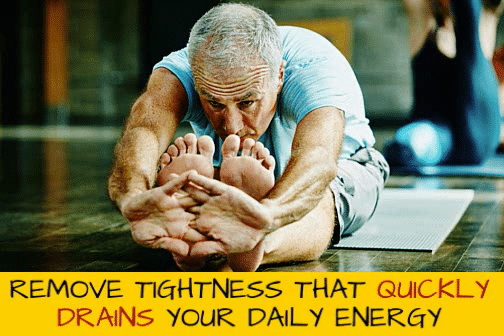Runner Taking a Break-STACK
ThinkstockFirst things first—don’t let this article ruin the joy of a good jog. If you enjoy jogging, you’re more likely to do it, so have at it. A good jog now and then can burn fat and improve cardiovascular health—and it can be done with little risk of injury.
But although jogging has its benefits, it can’t compete with many other workouts—options that burn more fat, deliver better cardiovascular benefits, trigger physiological responses that further enhance body composition, and present less risk of nagging inflammation and overuse injuries.
Here are a few reasons why jogging is not my first choice for most fitness clients.
What’s Wrong With Jogging?
Mechanics
Jogging offers less reward per risk when compared with running and walking. Of the three, jogging’s angle of force requires the greatest amount of vertical displacement. Conscientious walking and elite-level sprinting translates more force horizontally, engages a broader range of motion and minimizes jarring throughout the body, especially the torso.
Speaking of the torso, a common deficiency in many joggers is posture. A long jog has a jarring effect on the postural muscles, which can eventually result in improper body position. Although it’s possible to minimize jarring by concentrating on form throughout a run, joggers tend to lose form when they “tune out” during long runs. Walkers, on the other hand, usually maintain good form during long walks.
Sprinting produces a much higher amount of force, but this is actually a good thing, since muscle groups surrounding joints create stability when they contract. The quicker the stride, the more stability the muscles are able to provide.
Metabolism
Since sprinting requires more force and a greater range of motion than jogging, it’s more metabolically demanding. We also know that a combination of sprinting and walking increases metabolism better than simple jogging.
Also, sprinting requires more fuel than jogging, which is better for those who want to slim down. When training for body composition, we want to make movements as inefficient (and inherently difficult) as possible. As with any movement, the more you jog, the more efficient you become at it, and the longer you need to run to trigger the same response. Which leads me to my next point.
Overuse Injuries
Despite its inherent flaws as a mode of exercise, jogging can be safe for those who use proper technique. However, the high volume and frequency of most jogging programs make even the smallest injuries grow significant over time. If a jogger pauses his or her training to heal, his or her aerobic system will begin to atrophy, and all that hard-earned progress will feel like an exercise in futility. That’s why, even for my clients who love to jog, I recommend a routine that taxes the aerobic system without the repeated load on the knee joints.
Specificity
Training specificity is one of the simplest, yet most misunderstood, principles in exercise programming. Every movement you make should get you closer to your goal. So unless your goal is to jog better, you should probably be doing more functional exercises. If your goal is body composition, even the best jogs can’t deliver the results that anaerobic programs can.
Alternatives to Jogging
Get better results faster by training with the following workout programs.
Intervals
By combining sprinting and walking, you get the best of both worlds: tapping your anaerobic threshold, sustaining your heart rate and refining your running mechanics for transfer to sports. This is why we see less jogging on football fields and basketball courts today.
Learn how to improve your conditioning with Tabata interval training.
Circuit Training
By ordering your workouts to move from exercise to exercise with little rest, you maintain an elevated heart rate while tapping anaerobic thresholds and activating a variety of muscle groups. Circuit training gives you a solid workout in a short amount of time and offers endless opportunities for customization. This is the cornerstone of most popular group exercise programs.
Swimming, Biking and Incline Walks
Although I may appear to be biased toward anaerobic training, “pure” aerobic training definitely has a place in muscle gain/fat loss routines—i.e., for those who already do resistance training more than three days per week. For this crowd, swimming, biking and uphill walking complement resistance training to enhance body composition and overall fitness. All rely heavily on the aerobic system and are normally safe to perform to fatigue.
Multi-Planar Movements
I am a big fan of multi-planar movements for a number of reasons. The additional muscle activation and movement inefficiency leads to more caloric output and adaptation. Also, multi-directional movements could lead to better joint function and dynamic stability. Plus, I simply enjoy seeing creative movement in my clients; it shows they are engaged in their training. Crossovers, backpedals, and lateral movements of any kind are all solid options.
Sports
I’m a big fan of competitive sports. Staying in the weight room all day can lead to over-developed areas of the body and injuries. Want a muscle strain? Train exclusively in the weight room for a month, then go all-out in a game of basketball. The sports I recommend most to my fitness clients are soccer, basketball, tennis, racquetball, football and volleyball, in that order. Notice how all these sports can be seen as forms of interval training?
Uphill Sprints
Sprinting uphill is good for the body because it relies very little on the eccentric and elastic contribution at the joints. As a matter of fact, the exercise is almost entirely concentric force production, a method often used in rehabilitation to strengthen, but not break down, muscle groups.
Original post found at: http://sports.yahoo.com/news/why-jogging-counterproductive-123659107.htmlP.S. I am a big believer in doing interval training at least three times per week. It’s the best way to lose weight and improve cardiovascular health. Plus it takes less time to complete than simply jogging. When running outside try to avoid street or sidewalk runs since the heavy impact can cause joint problems. Opt instead for dirt tracks or even grass as your running surface.
P.P.S. Visit Exercises for Diabetics Today for easy workouts you can start now . . . and be ten pounds lighter in five weeks.







